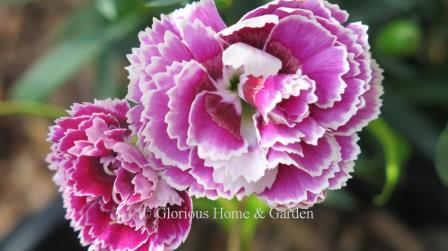Beardless Irises Are Some of the Most Useful and Beautiful for the Home Garden
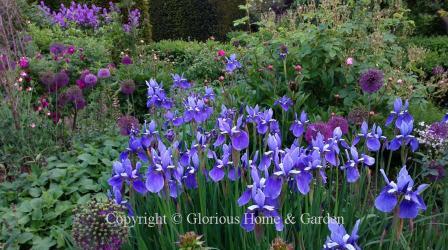 Iris sibirica
Iris sibiricaBeardless irises include the crested irises (I. cristata); Japanese irises (I. ensata); I. japonica; I laevigata; Louisiana irises; I pseudacorus; Siberian irises (I. sibirica), Japanese roof irises (I. tectorum), and native American species including I. versicolor and I virginica, and their hybrids, among others.
Iris cristata, crested iris, Zones 3-8. The bloom period is short, but crested iris
makes a lovely ground cover especially in a shady border or woodland
setting. Set out a small pot of the
rhizomes and you will have a substantial clump in a couple of years. After flowering, the short, narrow, pointed
leaves are attractive and neat until disappearing for the winter. This North American native has joined the
mainstream of choice garden plants.
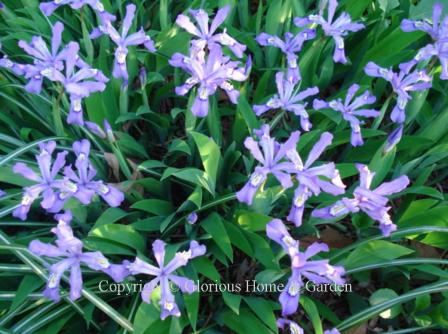 Iris cristata 'Eco Bluebird'
Iris cristata 'Eco Bluebird'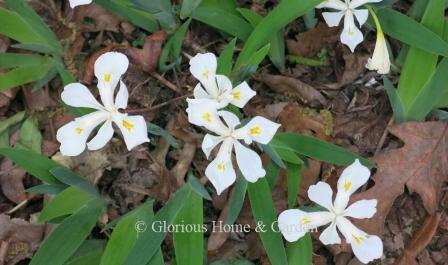 Iris cristata 'Tennessee White'
Iris cristata 'Tennessee White'Iris ensata, Japanese water iris, Zones 4-9. Japanese irises are absolute divas among spring perennials! Large, glamorous blooms dance above the foliage like exotic butterflies. To see them in full bloom is to want them, and why not? No need to deprive your garden of such beauty! And since they bloom after the bearded irises, they will extend the iris season in the garden blooming usually in May in the South and in June and July further north. Iris ensata were developed in Japan from the species Iris laevigata and look very different. Today's most popular hybrids have large blooms that open flat with overlapping petals. There are several different forms recognized with the basic form being the simplest and most closely resembling the original species. Form 3F has single flowers with 3 falls. Form 6F has double flowers with all 6 petals having been developed into falls (as shown below); and Form 9-12F is very full and has more than the usual number of petals. The color range is somewhat limited from white, white with yellow, pink, blue, purple, and violet usually with prominent veining or speckling and flashes of yellow in the petals. Culturally, Japanese irises require ample moisture, especially around the blooming season--but are not grown directly in water--thus they are superb grown around the edges of ponds or streams. They are heavy feeders and prefer rich, humusy soil and full sun to do their best.
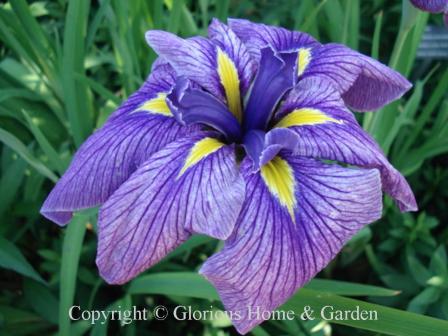 Iris ensata
Iris ensata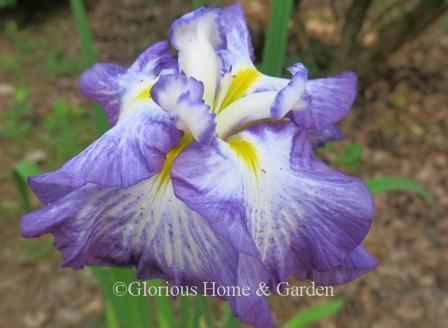 Iris ensata 'Cascade Spice'
Iris ensata 'Cascade Spice'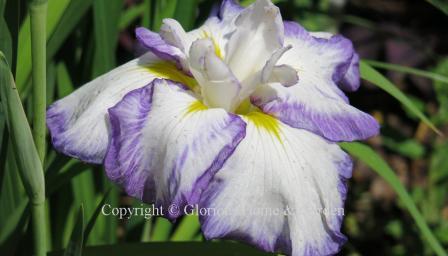 Iris ensata 'Light at Dawn'
Iris ensata 'Light at Dawn'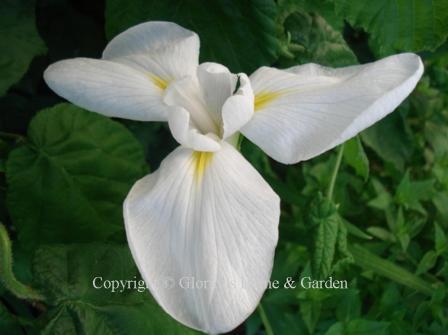 Iris ensata 'Mt. Fuji'
Iris ensata 'Mt. Fuji'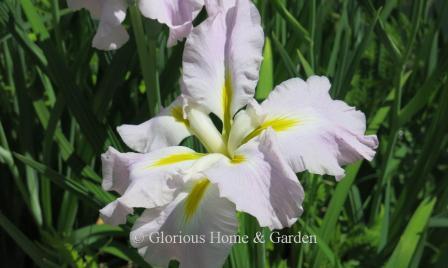 Iris ensata 'Pink Frost'
Iris ensata 'Pink Frost'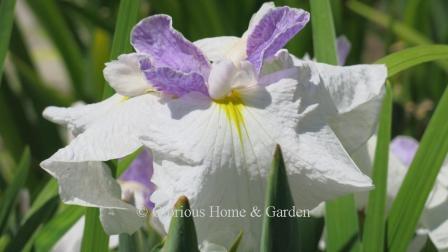 Iris ensata 'Queen's Tiara'
Iris ensata 'Queen's Tiara'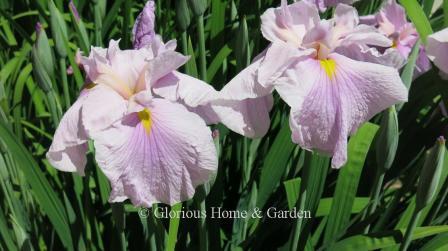 Iris ensata 'Sakura Komachi'
Iris ensata 'Sakura Komachi'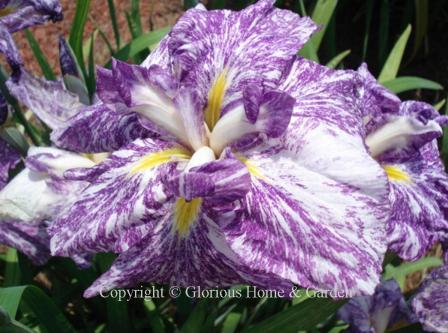 Iris ensata 'Umi Botaru'
Iris ensata 'Umi Botaru'Iris fulva, copper iris, Zones 6-9. This species native to the lower Mississippi valley is typically a warm terracotta, brick red or yellow, and occurs in wetlands and ditches. It can grow well as a garden plant if provided adequate moisture. It is one of the irises from which the Louisiana iris hybrids have been developed. ‘Lois’ is a yellow-flowered cultivar of I. fulva.
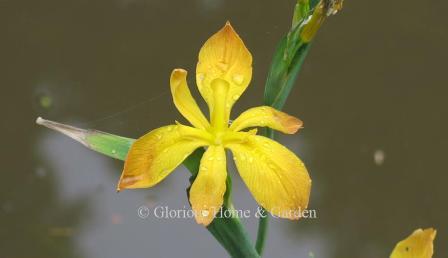 Iris fulva 'Lois'
Iris fulva 'Lois'Iris japonica, Japanese iris, Zones 7-9. Iris japonica is a spring-blooming iris that prefers partial shade. Siting it at the edge of a woodland would be ideal, so its adventurous roots can spread, so give it room.
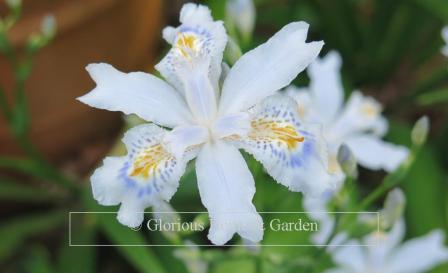 Iris japonica 'Porcelain Maiden'
Iris japonica 'Porcelain Maiden'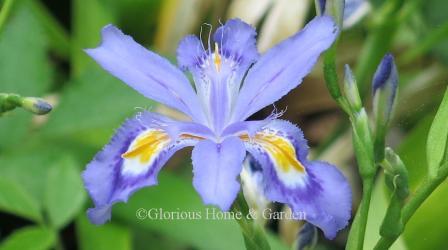 Iris japonica 'Skirt Chaser'
Iris japonica 'Skirt Chaser'Iris x louisiana, Louisiana iris hybrids, Zones 4-9. Louisiana irises were developed from North American native species, and are some of the most exciting types being hybridized today. Beautiful shades of white, yellow, coral, pink, rose, red, lavender, plum, the deepest purple and blues are available. They prefer consistently moist soil rich in humus, and partial shade.
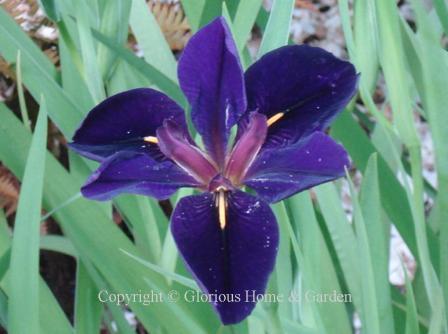 Iris x louisiana 'Black Gamecock'
Iris x louisiana 'Black Gamecock'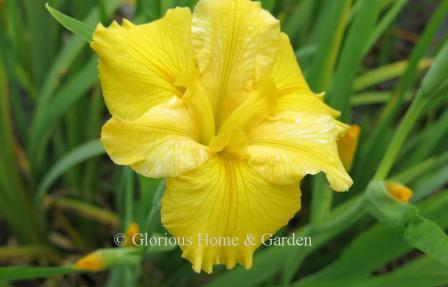 Iris x louisiana 'Brushfire Moon'
Iris x louisiana 'Brushfire Moon'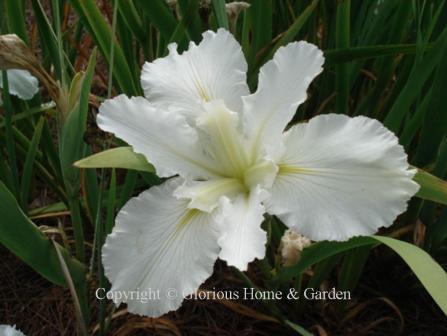 Iris x louisiana 'Dural White Butterfly'
Iris x louisiana 'Dural White Butterfly'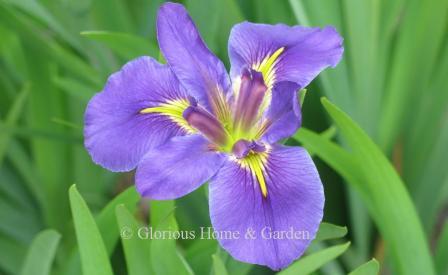 Iris x louisiana 'Geisha Eyes'
Iris x louisiana 'Geisha Eyes'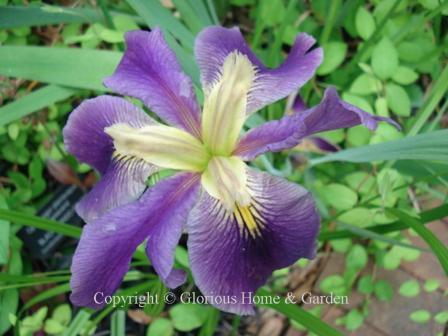 Iris x louisiana 'Hurricane Party'
Iris x louisiana 'Hurricane Party'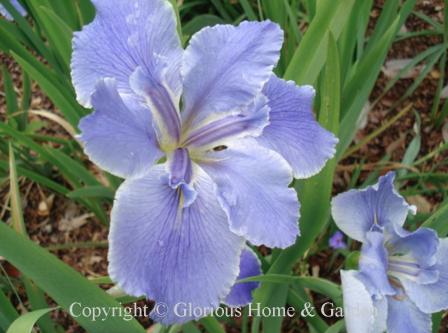 Iris louisiana 'Now and Forever'
Iris louisiana 'Now and Forever'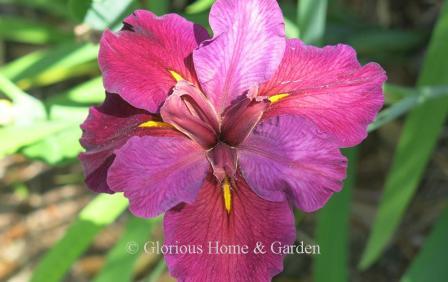 Iris x louisiana 'Red Velvet Elvis'
Iris x louisiana 'Red Velvet Elvis'Iris x nelsonii, Nelson’s iris or Abbeville Reds, Zones 7-10. An iris native to swampy wetlands near Abbeville, LA. There are red and yellow variants. It is similar to I. fulva, though larger, and is used in the development of Louisiana iris hybrids.
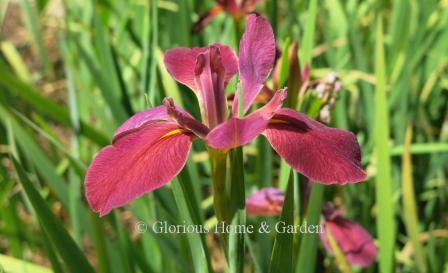 Iris x nelsonii
Iris x nelsoniiIris pseudacorus, yellow flag iris, Zones 5-9. A favorite for water gardens, yellow flag iris will do well near the edge of a pond or stream. It is easy to grow, and blooms in late spring to early summer in full sun or partial shade.
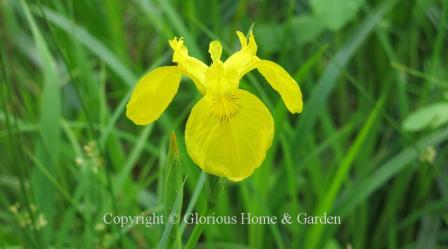 Iris pseudacorus
Iris pseudacorusIris x pseudata, Japanese water iris, eye shadow iris, Zones 4-9. This is an interspecies cross between Iris ensata and Iris pseudacorus to introduce yellow into Japanese irises. Some very interesting and beautiful cultivars have been created, most with the distinctive “eyelash” markings on the falls.
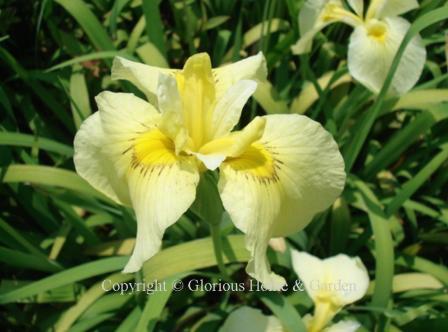 Iris x pseudata 'Aichi-no-Kagayaki'
Iris x pseudata 'Aichi-no-Kagayaki'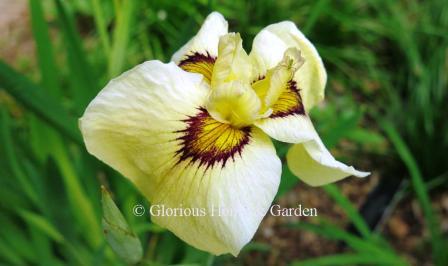 Iris x pseudata 'Ryugan'
Iris x pseudata 'Ryugan'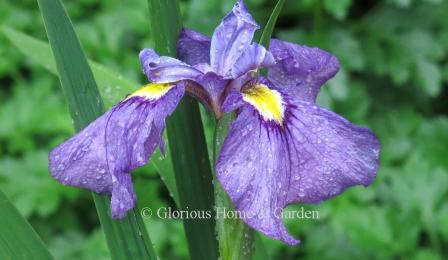 Iris x pseudata 'Shiryukyo'
Iris x pseudata 'Shiryukyo'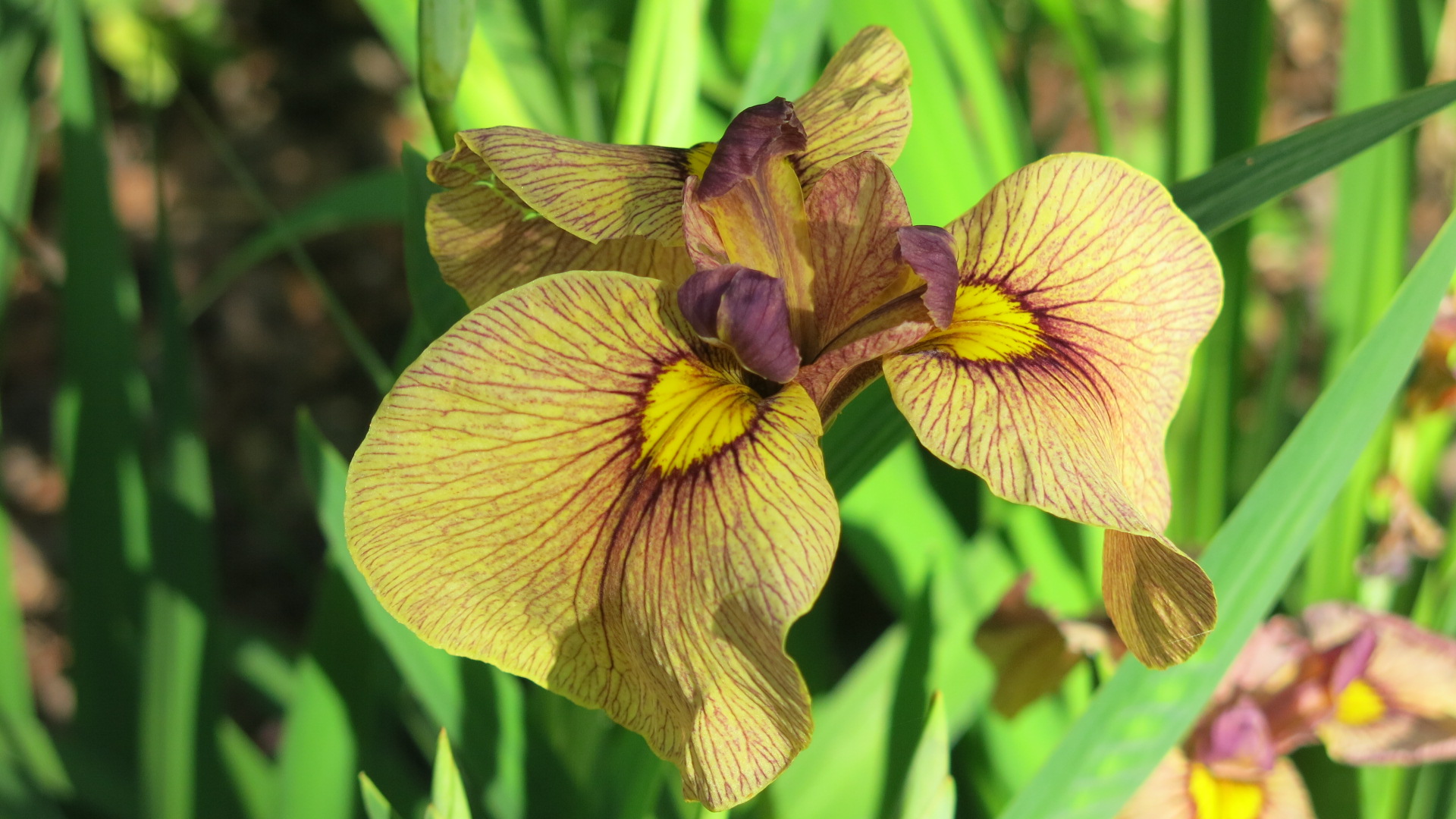 Iris x pseudata 'Yarai'
Iris x pseudata 'Yarai'Iris x robusta, ‘Gerald Darby,’ Zones 4-9. ‘Gerald Darby’ is an excellent landscape and border iris known for its tolerance of wet soils which makes it useful for areas that stay damp, or on the edges of ponds. Most striking are the purple leaves that emerge at the base in spring, and the dark purple, nearly black stems that rise to about 36” bearing dark violet-blue flowers.
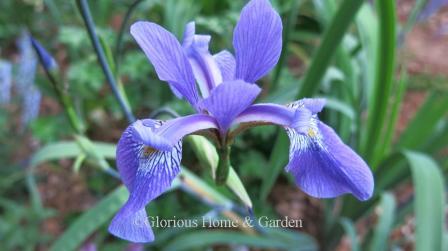 Iris x robusta 'Gerald Darby'
Iris x robusta 'Gerald Darby'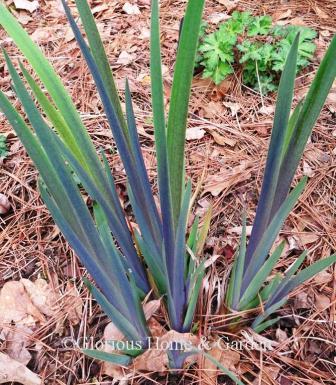 Iris x robusta 'Gerald Darby' foliage
Iris x robusta 'Gerald Darby' foliageIris sibirica, Siberian iris, Zones 3-9. Every garden should have some Siberian irises. They are elegant perennials to use as an artist would a paintbrush to add broad swathes of color throughout beds and borders in the spring. One small division will develop into a good-sized clump in a couple of years. Siberians come in nearly the same rainbow of colors as their larger cousins, the tall bearded irises which bloom at the same time. They are available in beautiful blues from midnight to pale azure, violets, lavenders, whites, creams, yellows, roses, and even some bronzy-gold tones. Even out of bloom, the narrow, grassy foliage is neat and tidy in the garden.
Siberian irises prefer moist soils and plenty of sunshine. I have found that they resent being disturbed. I had a large clump of ‘Caesar’s Brother’ that I dug up, separated and moved into another part of the garden, and it took a couple of years before they really put on a good show again.
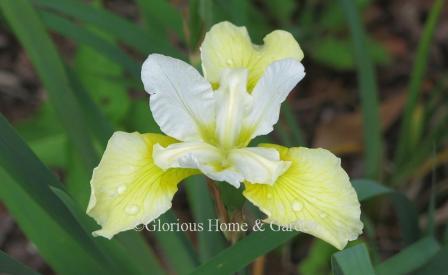 Iris sibirica 'Butter and Sugar'
Iris sibirica 'Butter and Sugar'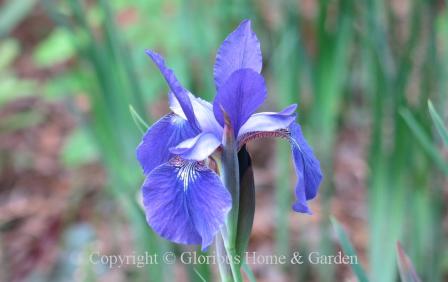 Iris sibirica 'Caesar's Brother'
Iris sibirica 'Caesar's Brother'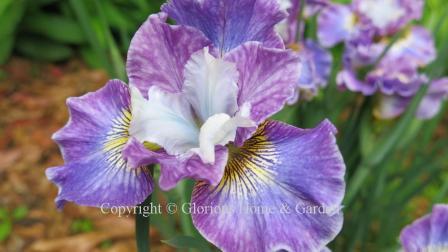 Iris sibirica 'Charming Billy'
Iris sibirica 'Charming Billy'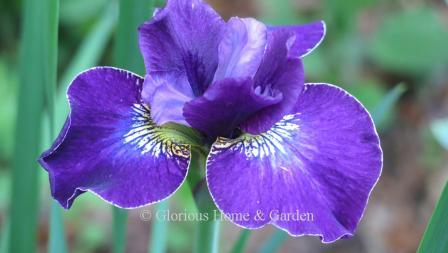 Iris sibirica 'Crimsom Cloisonne'
Iris sibirica 'Crimsom Cloisonne'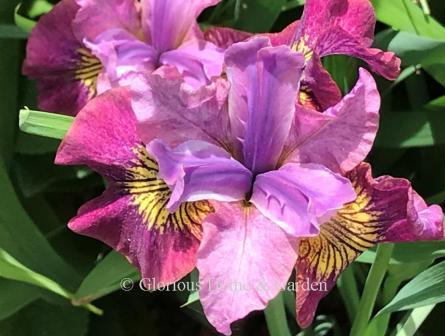 Iris sibirica 'Miss Apple'
Iris sibirica 'Miss Apple'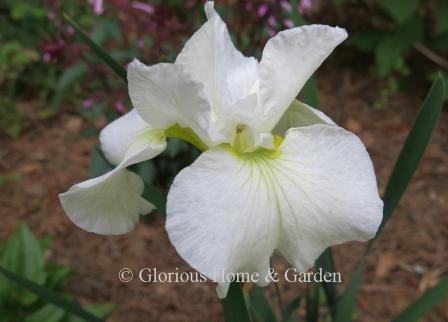 Iris sibirica 'Moon Dazzle'
Iris sibirica 'Moon Dazzle'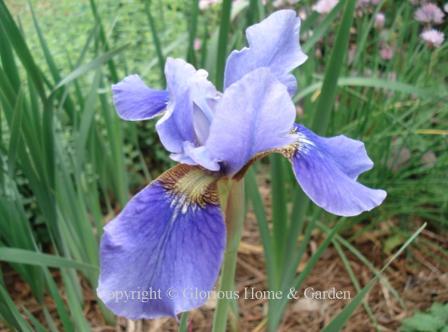 Irs sibirica 'Orville Fay'
Irs sibirica 'Orville Fay'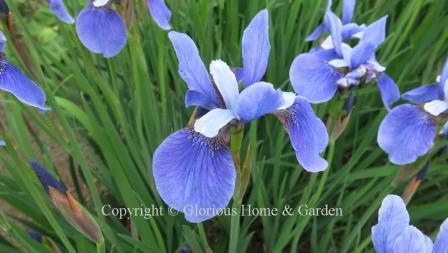 Iris sibirica 'Placid Waters'
Iris sibirica 'Placid Waters'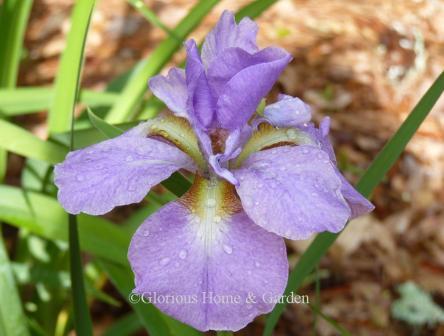 Iris sibirica 'Ranman'
Iris sibirica 'Ranman'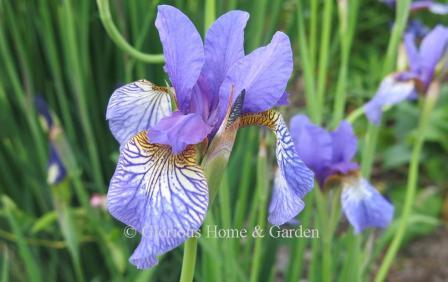 Iris sibirica 'Shaker's Prayer'
Iris sibirica 'Shaker's Prayer'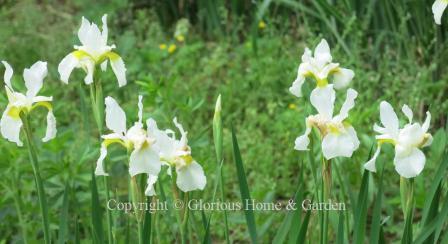 Iris sibirica 'Snowcrest'
Iris sibirica 'Snowcrest'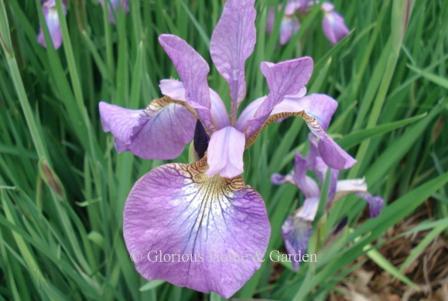 Iris sibirica 'Sparkling Rose'
Iris sibirica 'Sparkling Rose'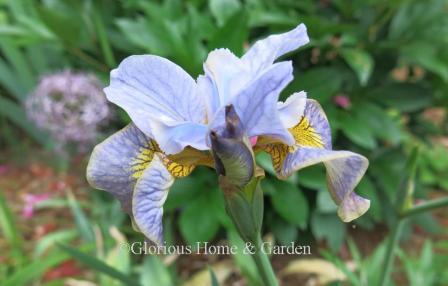 Iris sibirica 'Uncorked'
Iris sibirica 'Uncorked'Iris tectorum, Japanese roof iris, Zones 4-8. I remember buying my first Japanese roof iris at a plant sale at the Wing Haven garden in Charlotte, NC, and have been delighted with it ever since The lilac-blue flowers are large with ruffled standards and falls that open flat. The falls are decorated with darker violet spots and veins. The is also a white form, ‘Alba.’ The fan-shaped leaves are neat and attractive in the garden out of flower, but will soon form a good-sized clump and will benefit from division every few years to keep them blooming. This iris is native to Japan and China where it was traditionally used as part of the thatching for roofs, hence the common name.
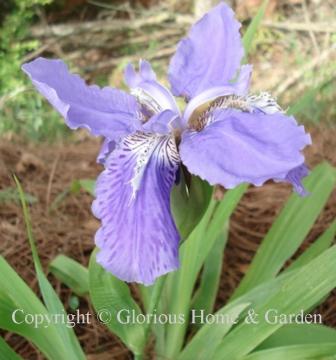 Iris tectorum
Iris tectorum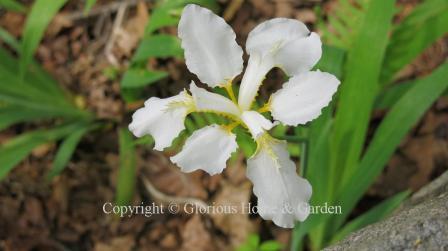 Iris tectorum var. alba
Iris tectorum var. albaIris versicolor, Northern blue flag, Zones 3-9. These lovely irises are native to the northeastern United State and Canada, and are found growing on the edges of streams, ponds, and other wetland situations. The color ranges from lavender to dark blue-purple with yellow and white splotches with veining on the falls. ‘John Wood’ is a lovely selection with larger flowers and a color that is more red-violet than the species. The foliage is beautiful too, being dark purple at the base as it emerges in the spring.
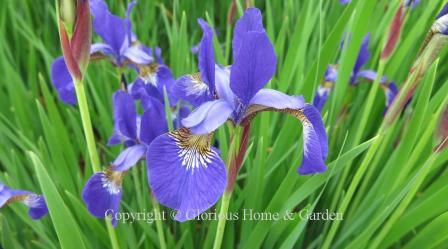 Iris versicolor
Iris versicolor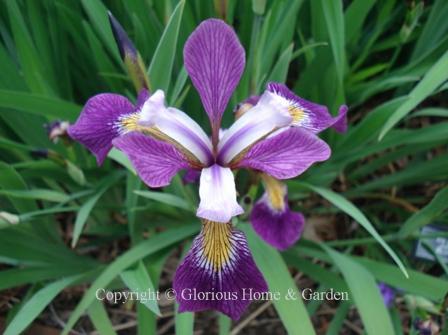 Iris versicolor 'John Wood'
Iris versicolor 'John Wood'Iris virginica, Southern blue flag, Zones 5-9. The Southern equivalent of I. versicolor is a native to the southeastern United States, and is most commonly found in wetlands and coastal areas. In spite of its preference for sandy, boggy soils, it will do well in gardens as long as the soil is moisture-retentive, and it prefers full sun. This would be a good choice for the edge of a pond, native habitat area, or wetland restoration. The species is a pale blue to blue violet with veining and a yellow area on the falls, and grows about 2’ tall. ‘Southern Wanderer’ is a selection that has lighter lavender standards and light blue-violet falls with veining and a yellow blotch. The standards and falls are distinctly separate, and make an almost flat flower.
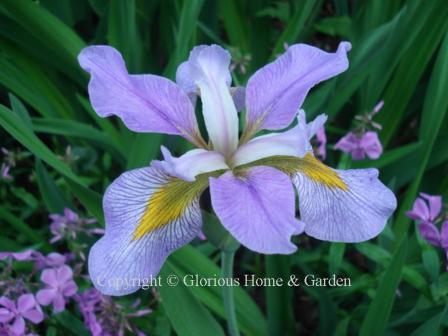 Iris virginica 'Southern Wanderer'
Iris virginica 'Southern Wanderer'